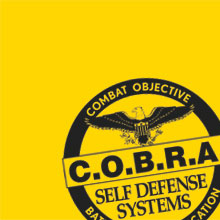-
Philosophy and Purpose: Reality-Based Self-Defense: Focuses on practicality and effectiveness in real-life situations. It is often designed for self-preservation and personal safety. The primary goal is to quickly incapacitate or escape from an attacker.
Martial Arts Self-Defense: Martial arts often have a strong emphasis on discipline, tradition, and personal development alongside self-defense. While they can be effective for self-defense, many martial arts also involve sport or competition aspects.
-
Techniques: Reality-Based Self-Defense: Utilizes techniques that are simple, direct, and easy to learn and apply under stress. Techniques are often based on gross motor skills and aim to neutralize the threat swiftly.
Martial Arts Self-Defense: Includes a wide range of techniques and forms that may involve complex movements, katas, or patterns. These techniques are often stylized and can take years to master.
-
Training Approach: Reality-Based Self-Defense: Emphasizes scenario-based training, situational awareness, and quick decision-making. Training often includes simulations of real-life threats.
Martial Arts Self-Defense: Focuses on perfecting forms, patterns, and techniques through repetition and discipline. Sparring is common, but the primary focus is not always on real-world scenarios.
-
Weaponry: Reality-Based Self-Defense: May incorporate training for defending against armed attackers and using improvised weapons.
Martial Arts Self-Defense: Generally does not emphasize weaponry unless it’s a specific martial art like Filipino martial arts or traditional Japanese jiu-jitsu.
-
Physical Conditioning: Reality-Based Self-Defense: Often emphasizes functional fitness, strength, and conditioning to enable individuals to escape or fight back effectively.
Martial Arts Self-Defense: Focuses on flexibility, balance, and coordination, along with physical fitness, but the emphasis can vary depending on the specific martial art.
-
Mindset and Decision Making: Reality-Based Self-Defense: Encourages a “survival mindset” and teaches individuals to make quick decisions under stress, including when to run, fight, or de-escalate.
Martial Arts Self-Defense: While martial arts can build mental toughness and discipline, the focus is not always on the specific mental aspects of self-defense situations.
-
Legal Considerations: Reality-Based Self-Defense: Often addresses legal aspects of self-defense, such as when the use of force is justified and how to interact with law enforcement.
Martial Arts Self-Defense: May not always cover legal considerations, as the primary focus is often on technique and skill development.
In summary, reality-based self-defense places a strong emphasis on practicality, simplicity, and real-world scenarios, whereas martial arts self-defense can encompass a broader range of goals, including personal development, sport, and competition, in addition to self-defense. The choice between the two depends on an individual’s specific goals and needs.


